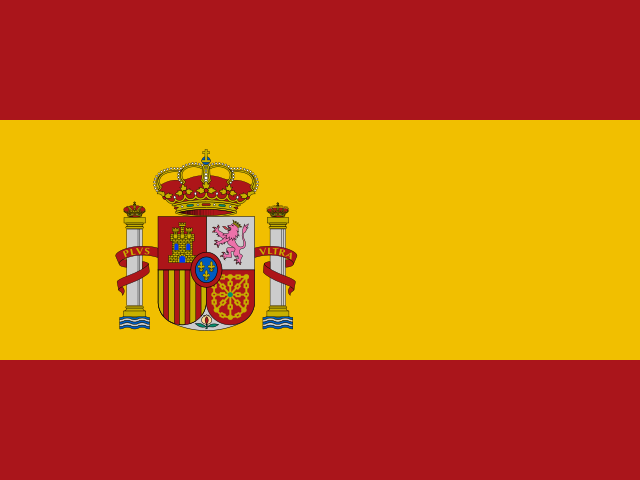
Spain
The list of frequently named individuals is split between established TV and radio hosts using social media to expand their presence, politicians, and political commentators, and younger creators connecting with their peers around a broader range of content from gaming to e-sports. Broadcast networks and legacy newspaper brands such as El País and El Mundo have enthusiastically embraced social media, leaving less room for independent news creators and influencers. All of the individual names in our list are Spanish and the vast majority are men. There is limited attention for US commentators when compared with many other European countries.
Straddling politics and journalism are Alvise Pérez from the right (currently an MEP and who started with an influential Telegram channel) and Pablo Iglesias on the left, who was deputy prime minister (2020–2021) and the founder of far-left party Podemos. These personalities are agents of polarisation for both the left and the right, and sometimes influential in public debates.
Another polarising figure is Un Tío Blanco Hetero (UTBH), the pseudonym of YouTuber Sergio Candanedo. UTBH is known for his criticism of concepts like modern feminism and political correctness. His videos feature a white mask and hoodie, and he presents himself satirically as ‘a straight white guy’ while delivering strident critiques of current social issues. Not surprisingly most of his followers come from the political right.
From the progressive left, Alan Barroso is a young political scientist and author who posts regularly across multiple platforms. He runs two separate channels on YouTube, a daily podcast on Spotify, and has over half a million followers on TikTok.
Jordi Wild is a popular YouTuber and psychologist known for his podcast The Wild Project, which is sometimes compared to Joe Rogan’s due to its similar format of long-form interviews and a blunt, provocative style. Wild has a significant following in Spain (more than 6m subscribers on YouTube), and like Rogan he often interviews controversial figures and tackles divisive topics.
Angel Martín is a Spanish comedian, actor, and TV presenter who in recent years has become known for his satirical videos on social media. These videos, entitled ‘Informativo matinal para ahorrar tiempo’ (Morning news to save time), summarise the main headlines of the day in a humourous way and became a viral success.
One notable and much cited Instagram account is Es.descirdiario (1m followers) founded by author and journalist Sheila Hernandez Torres. It focuses on telling human interest stories for younger audiences in engaging and visual ways.
Instagram plays a significant role in supporting numerous lifestyle creators in Spain along with YouTube and X. TikTok and Twitch are mostly popular with younger groups. Telegram and Facebook also feature in terms of building followers with different groups.
Proportion that regularly pay attention to creators/influencers in social and video networks
18%
(18/24)
Proportion that regularly pay attention to news brands/journalists in social and video networks
27%
(11/24)
Gender balance
14
of the top 15 individuals are men
These lists represent the individuals most mentioned by respondents to our 2025 and 2024 Digital News Report surveys in the context of news and social media and video networks. Respondents who used Facebook, YouTube, X, Instagram, Snapchat or TikTok for news were asked where they paid most attention – including options for traditional news media/journalists, digital-first news outlets not associated with traditional media, creators/personalities who mostly focus on the news, creators/personalities who occasionally focus on the news. For each type, we asked respondents to name up to three examples of who they paid attention to. We then counted the individuals mostly using a tool called OpenRefine to help us use a semi-automated approach to clean the data (e.g. resolve misspellings or alternative names, remove duplicates etc.). In parallel, we also used ChatGPT5 to process and recode the original data, and to identify the most mentioned individuals to give us a way of comparing results. Further details on the tools we used and on small differences in methodology between 2024 and 2025 are provided in our methodology section.
Why did you use open fields rather than closed lists to collect the data?
We used open text response boxes, first, because in many countries the most popular news creators and influencers have not yet been identified by previous research. Second, because it would likely not be possible to fully capture the broad and fragmented nature of this ecosystem using a fixed listed of response options. And third, because we wanted to adopt an audience-centric approach whereby respondents could enter names that they considered news sources to them, even if they did not meet accepted standards or definitions within academia or the journalistic profession. This means that many of the names we list here would perhaps have been excluded under a more top-down approach.
How definitive is the order of the named individuals in each country?
In some cases, especially near the bottom the list, differences in the number of mentions for individuals are very small. Given our survey methodology, and the associated margin of error, the precise rank order should be read as indicative rather than definitive. Many other individuals were mentioned by respondents in the context of news, even if they do not make the top 15 using our approach. The lists should therefore be seen as indicative of some of the top news individuals in each country.
Why are some popular individuals with high follower counts lower down the list than individuals with high follower counts?
There are a number of possible reasons for this. First, some popular creators such as musicians and comedians are known more for entertainment than for news and their follower counts are often higher as a result. This means that even if they do occasionally talk about news related issues, not all of their followers will be aware of it. Second, some individuals working for traditional media may have relatively low personal followings but are widely distributed via social accounts of news brands. Third, there is a margin of error in surveys such as this (see previous answer) that needs to be borne in mind.
Did you exclude any individuals or other entries as part of the process?
Our lists are inclusive in terms of being faithful to the individual names mentioned by respondents. We removed just a handful of actors, sports stars, and celebrities if we were sure they did not post on any news-related issues. In most cases this did not affect the top 15 names that are published in this report for each country.
Many creators operate as part of collectives or use pseudonyms. How did you deal with these categorisation issues?
In terms of creator collectives or social-first brands, such as the Daily Wire (US) or TLDR News (UK) we followed the lead of our respondents. Where audiences have identified them as individuals, we have tended to categorise these as creators rather than news brands, but where they have mentioned a brand, we included them in our list of news brands. Where it was clear, however, that the brand is the work of one individual (e.g. Es.decirdiario/Sheila Hernández in Spain) we categorised them as an individual and made the connection clear in the description. Many creators use pseudonyms and, in these cases, we combined mentions of these with the real names. Again, we tried to make the connection clear in the description.
How did you deal with politicians and the overlap between politicians and political commentary?
Politicians and businesspeople are also frequently mentioned by survey respondents in the context of news sources on social media, and often have significant followings (e.g. on X, Donald Trump has 109m, Narendra Modi 109m, and Elon Musk 225m). Many politicians are also content creators and commentators who shape public debates. Some content creators have become politicians, and vice versa. We chose to include politicians if they were named by respondents in the context of news, but we have also shaded serving (or recently serving) politicians in grey to make clear the different relationship they often have with news consumers.

